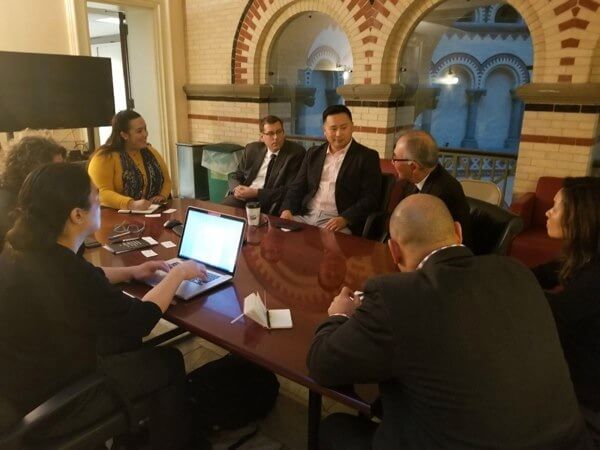By Gina Martinez
State Assemblymen Ron Kim (D-Flushing) and Edward Braunstein (D-Bayside) met with city Department of Education officials Monday to discuss the expansion of the Korean Dual Language program in New York schools.
The assemblymen, whose districts have heavy Korean populations, said it was important to include Korean in these language programs, which are mostly limited to Chinese and Spanish. There is currently only one Korean Dual Language Program available in all of New York City at Flushing’s PS 32 and it ends after fifth grade, right before many students begin regular foreign language studies in junior high school.
In the meeting with DOE officials, Kim and Braunstein asked that they consider the growing Korean population in New York, particularly in Queens neighborhoods like Flushing, Bayside, and Whitestone. The lawmakers contended that the growth of the Korean community has created an increased demand for such dual language programs.
Also at the meeting were members from the Korean American Association of Greater New York, language education specialist Dr. Yung Duk Kim and Bright Limm, president of the Korean Americans for Political Advancement.
The community leaders urged DOE to work with the Assembly members in developing the program beyond primary school.
Kim, who is the only Korean-American elected official in New York, said studies have shown how valuable a bilingual education is for the development of young minds and limiting the language options could potentially prevent otherwise interested parents from enrolling their children in dual language programs.
“As a Korean-American whose two daughters will likely grow up speaking English, Korean and Chinese, the importance of this kind of education is clear to me,” Kim said. “The current program at PS 32 is a good start, but remains limited. It’s the only Korean dual language program in the whole city and ends after elementary school. By the time its participants graduate from high school, many may already forget what they learned. They should be offered a chance to continue their bilingual education, and their peers who live in other similar school districts should have an equal opportunity to enroll in these valuable programs.”
Braunstein said dual language programs have a proven track record of improving educational outcomes for students. He said many Korean-American families in his district are often surprised and disheartened when they discover Korean is not offered among the list of available programs.
“Our meeting today has given me hope that we can expand the current program to a far greater scope,” he said. “A bilingual education can foster greater intercultural exchange and understanding, helping to bridge gaps between communities while ensuring New York students of all backgrounds can stay connected to their roots and heritage.”
Reach Gina Martinez by e-mail at gmart



































